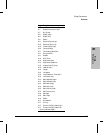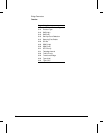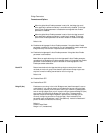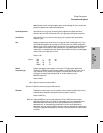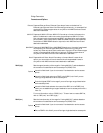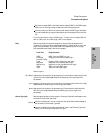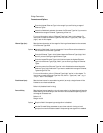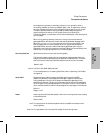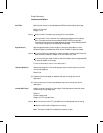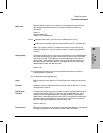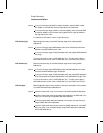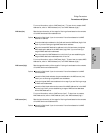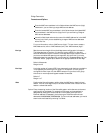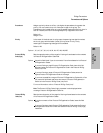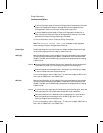
As the algorithm operates, it eventually places all circuit groups in either a
forwarding (enabled) or blocking (disabled) state. Later, in response to network
topology changes, the algorithm can change the state of specific circuit groups.
In order to prevent network looping caused by sudden state changes, the
algorithm does not transition circuit groups directly from Blocking to
Forwarding. Rather, it places them in two intermediate states—the Listening and
Learning state.
While in the Listening (stand-by) state, the circuit group receives network-
generated BPDUs, but does not receive end-station-generated message traffic.
When the )Forward Delay timer expires, the circuit group is placed in the
Learning state. While in Learning state, the circuit group receives network-
generated BPDUs, and also receives end-station-generated traffic which is
subjected to the learning process but not relayed. When the Forward Delay timer
expires, the circuit group is placed in the Forwarding state.
Forwarding Table Size
Specifies the maximum size of the forwarding table.
The forwarding table contains the list of end-station addresses learned by the
bridge, plus all source-address filters and destination-address filters. The value
that you enter at Forwarding Table Size sets the maximum size of this table.
Default: 1024
Options
0, 64, 512, 1024, 2048, 4096, and 8192
For more discussion on Forwarding Table Size, refer to ‘‘Spanning Tree Enable’’
on page 6-19
Group LAN ID
Accepts the group LAN ID used by the bridge when transmitting SRFs
(Specifically Routed Frames) between HP bridges. Together with the other
routing designators, Group LAN ID helps intermediate bridges identify the
destination end station.The group ID must match the Group LAN ID assigned to
all HP bridges running software release 5.74. and differ from all Internal LAN ID
(Hex) values and external LAN ID values assigned to any bridges on the network.
Default: 1
Range: 1 to fff.
Header
Used to position the filtered bit pattern within the incoming frame when creating
a user-defined filter.
Default: MAC
MAC
Find and position the filtered bit patterns within the MAC-level header of the
incoming frame.
Data Link
Find the pattern within the data-link header of the incoming frame.
Bridge
Parameters
6
Bridge Parameters
Parameters and Options
6-11



